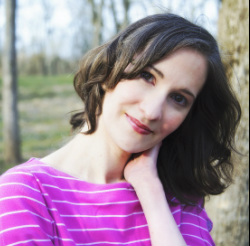
4 Ways Music Can Enhance Your Writing
by Dan Buri
If you find your writing is becoming stale—and let’s face it, we all find our writing is stale from time to time—sit back and enjoy music. I mean that quite literally. Lean back in your writing chair, turn on a song you love, close your eyes, and enjoy the music.
Music has a way of seeping into the soul more viscerally than any other form of art. Let music inspire the words you are writing.
In my recent book, 40 Tips on Creative Writing, I provide an inspirational guide for writers aiming to write their first, second, or even twentieth book.

In any creative endeavor, we all have moments of keen inspiration and moments where our well of creativity seems all but dried up. I wrote the book because of reader requests to consolidate some of the tips and tricks I use to continue to find daily motivation in my writing.
Music is a tried-and-true way for me to find my motivation on days when I find it might be lacking. When I’m not listening to music I’ve purchased and downloaded on my devices, I gravitate toward a couple of different streaming services, including Pandora and Spotify. Here are 4 Ways Music Can Enhance Your Writing.

1. Music Taps Into Our Creative Mind-Wandering Mode.
In Daniel J. Levitin’s book, This is Your Brain on Music , he describes the brain as having two primary modes: (1) paying attention closely and (2) mind-wandering. It is believed that most creativity happens when we are in mind-wandering mode.
This shouldn’t be surprising. When do you usually stumble upon your best ideas? If you’re like me, it’s not when we are laser focused on a task, but instead, when we’re in thoughtful, unorganized contemplation. It’s during these times that our brains will connect two seemingly disparate things and a spark of creativity will occur to bridge them.
There are plenty of ways to get yourself into mind-wandering mode, but as Levitin says, “Music is one of the most exquisitely effective ways of allowing you to enter the mind-wandering mode.”
If you’re looking to inject a spark of creativity into your writing, listen to music you enjoy. You will find your mind entering a realm of creative ideas.
2. Music Increases Verbal Intelligence
In a 2011 study published by the Department of Psychology at York University, researchers found that 90% of children had a significant increase in verbal intelligence after only one month of music lessons. Sylvain Moreno proposed that there is a transfer effect that happens in our ability to understand language from music training, particularly for kids.
What writer wouldn’t like to have a better grasp of language? I know my writing could use a boost in writing and reading comprehension. The more I can increase my verbal intelligence, the better I’ll be as a writer to see the big picture and connect all the dots for my readers.
3. Music Lowers Stress
We now know that music helps to open up creative avenues in the mind, but it also lowers stress levels (just like spending time in nature does). Let’s face it: we writers find ourselves in a variety of stressful situations, like, a deadline is rapidly approaching, or we’re unable to find a journal or website to publish our latest article, or our book is not getting into the hands of readers. If it’s not one stressful encounter in our writing life, it’s another.
A large number of studies have found that listening to music that you enjoy will decrease levels of cortisol—the stress hormone—in the body. One 2002 study from the National Center for Biotechnology Information found that active participation in music produces a significant boost in the immune system.
Sing away, my friends!

4. Music Enhances Memory
I keep a lot of notes. In fact, my wife often gives me a hard time about the number of journals I have floating around the house at any given time. If I don’t write it down, I’ll forget it. I have to jot it down so I can refer back to it later. I now know, however, that my listening to music is helping me remember things as well.
Researchers have found that listening to pleasurable music activates areas of the brain implicated in emotion and reward. They discovered that there’s a correlation between listening to music and our ability to remember or memorize things.
Want to be a smarter writer? Want to increase your vocabulary? Listen to music!
Dan Buri (@DanBuri777 on Twitter) is a trusted resource for writers to gain insight into the difficult world of indie publishing. Dan is a founding member of the Independent Writers Guild, a worldwide organization of writers and publishing professionals dedicated to promoting the interest of indie writers by encouraging public interest in, and fostering an appreciation of, quality indie literature. His website (<a href="http://www.Nothinganygood.com"http://www.Nothinganygood.com<) provides quality advice for all stages of the writing process, from the brainstorming and writing process, to becoming published, to marketing your writing and reaching readers.
Dan Buri’s latest book, 40 Tips on Creative Writing, is currently available in ebook and print formats. His first collection of short fiction, Pieces Like Pottery, which has been recognized on multiple Best-Seller lists, is an exploration of heartbreak and redemption.

His nonfiction works have been distributed online and in print, in publications including Pundit Press, Tree, Summit Avenue Review, American Discovery, and TC Huddle. He is an active IP attorney in the Pacific Northwest and lives in Oregon with his wife and two young children.

DAN BURI
LINKS
Dan Buri email: danburi777@gmail.com
Blog for Indie Writers: Nothing Any Good
Books: Pieces Like Pottery and Newly Released 40 Tips on Creative Writing
Twitter: DanBuri777
Goodreads: Dan Buri















You must be logged in to post a comment.